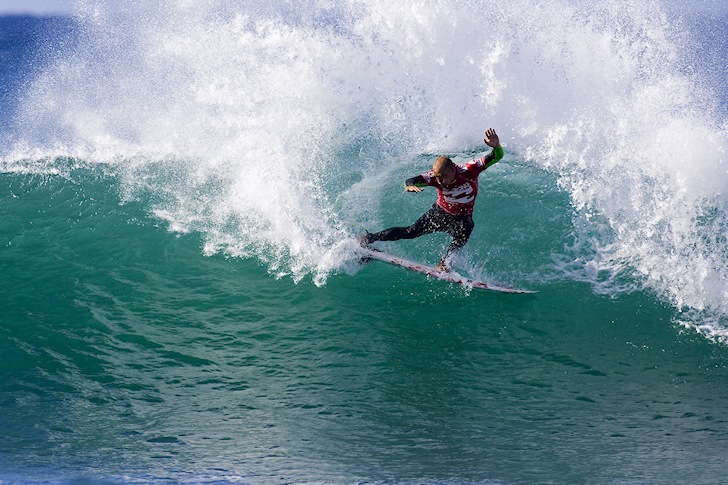Your feet are all-important in surfing. Whether you're a natural-footed surfer or a goofy footer, it's important to know how to use your heels and toes when riding a wave.
"Your back foot is your accelerator pedal. Your front foot does not assist at all in the turning process but is basically there for balance."
These words are from the four-time world surfing champion and Australian legend Mark Richards.
He knows how to drive a surfboard through the wave face and just how relevant feet are to doing what you want.
The surfboard won't even turn without heel and toe pressure from the back foot, so it's clear just how much of your skill is all in your feet.
Proper positioning puts your back foot one palm-length away from the board's tail, with your front foot slightly ahead of the middle of the plank. Using a good traction pad is advisable.
When you're performing a frontside bottom turn, the toes of your back foot will be applying pressure over the rail in the tail, activating fin power and acceleration.
Cutting Back
For the cutback, the same principle is applied. This time, it will be the heel of your back foot that will be responsible for the pressure applied to the surfboard.
Too much toe/heel pressure will catch rail, even if you're riding on soft, rounded rail sticks. Getting the perfect tune is the key to perfection.
"I am constantly amazed when discussing techniques that very few understand the basic principles of how a board turns. I even read design articles in surfing magazines, where shapers talk about how they shape special boards for a front-footed surfer", underlines Mark Richards.
"This is total rubbish! You cannot ever hope to surf competently using your front foot"," adds the Australian surfer on his blog.
In your next session, try to use your back foot as the main force for your surfing. The front foot should only balance the overall drive of your surf lines.
Discover ten details that matter in surfing.
